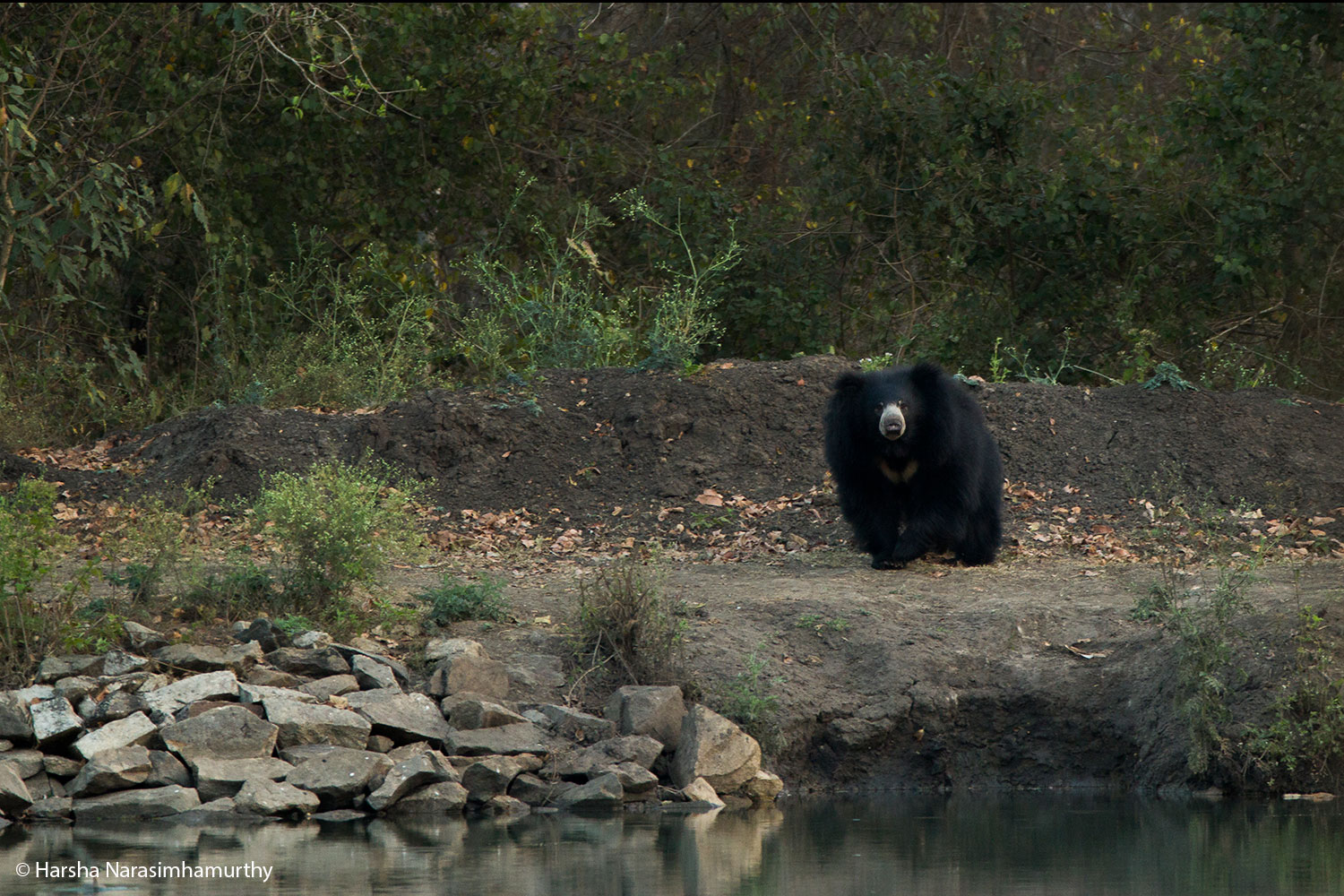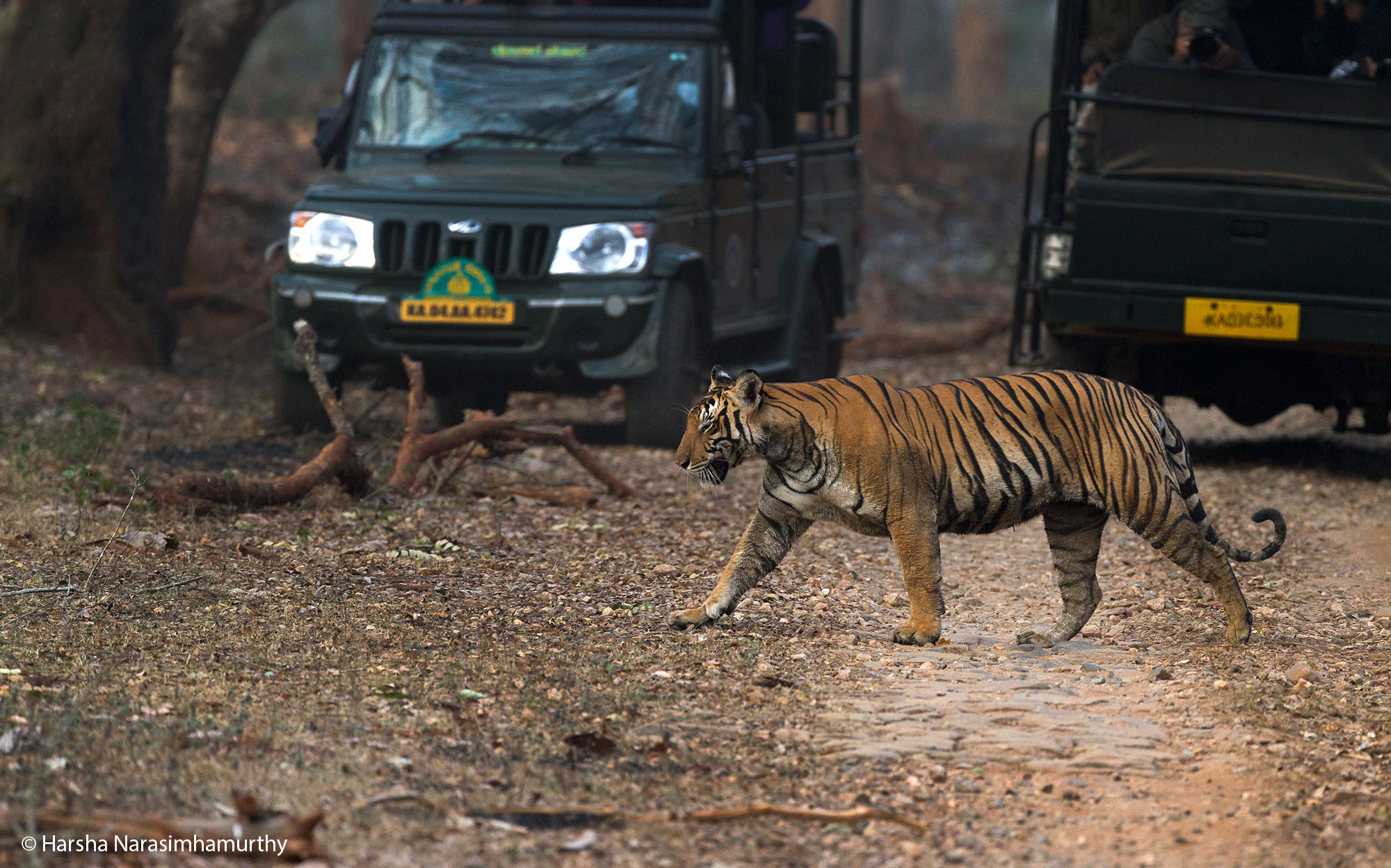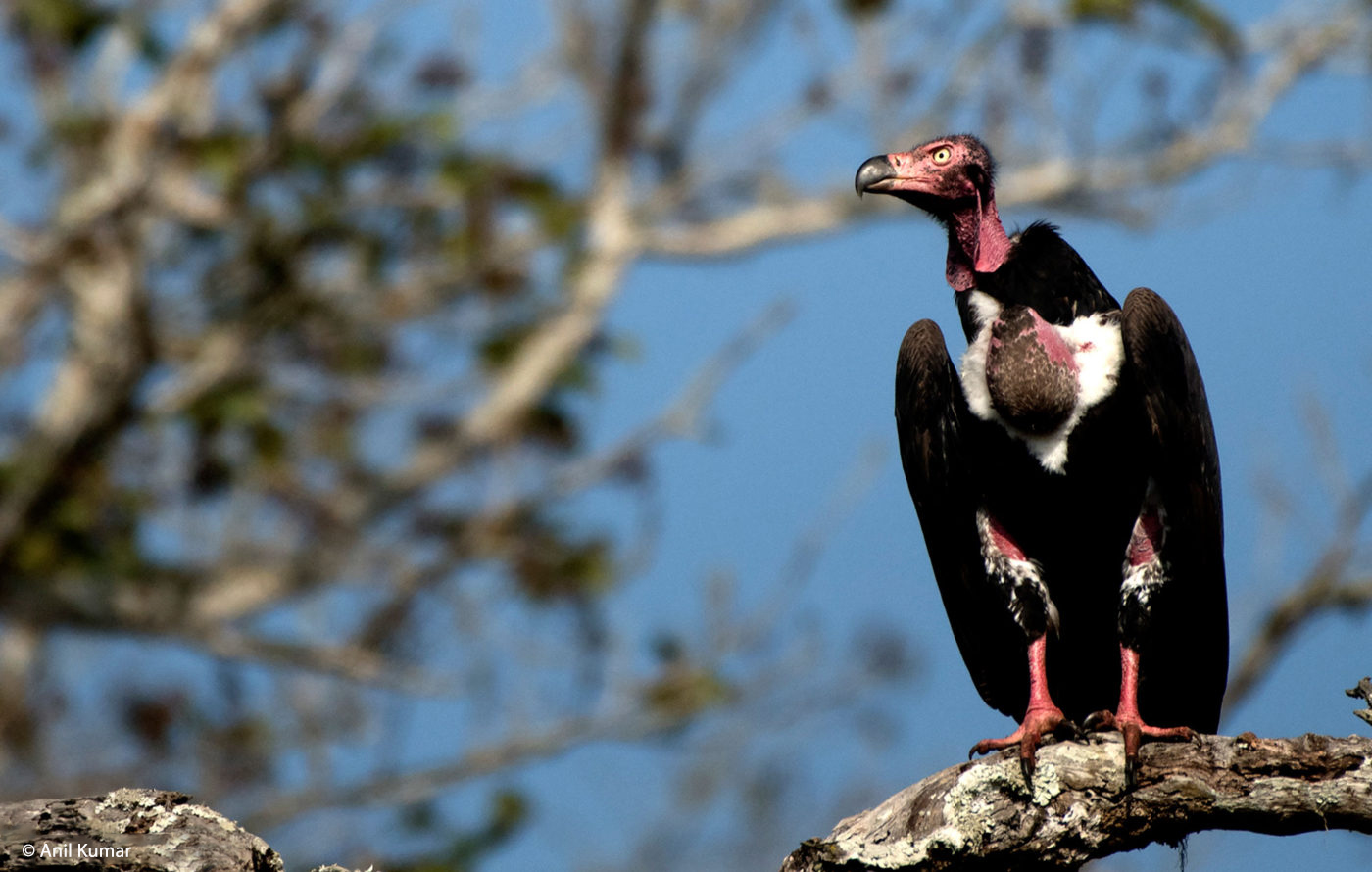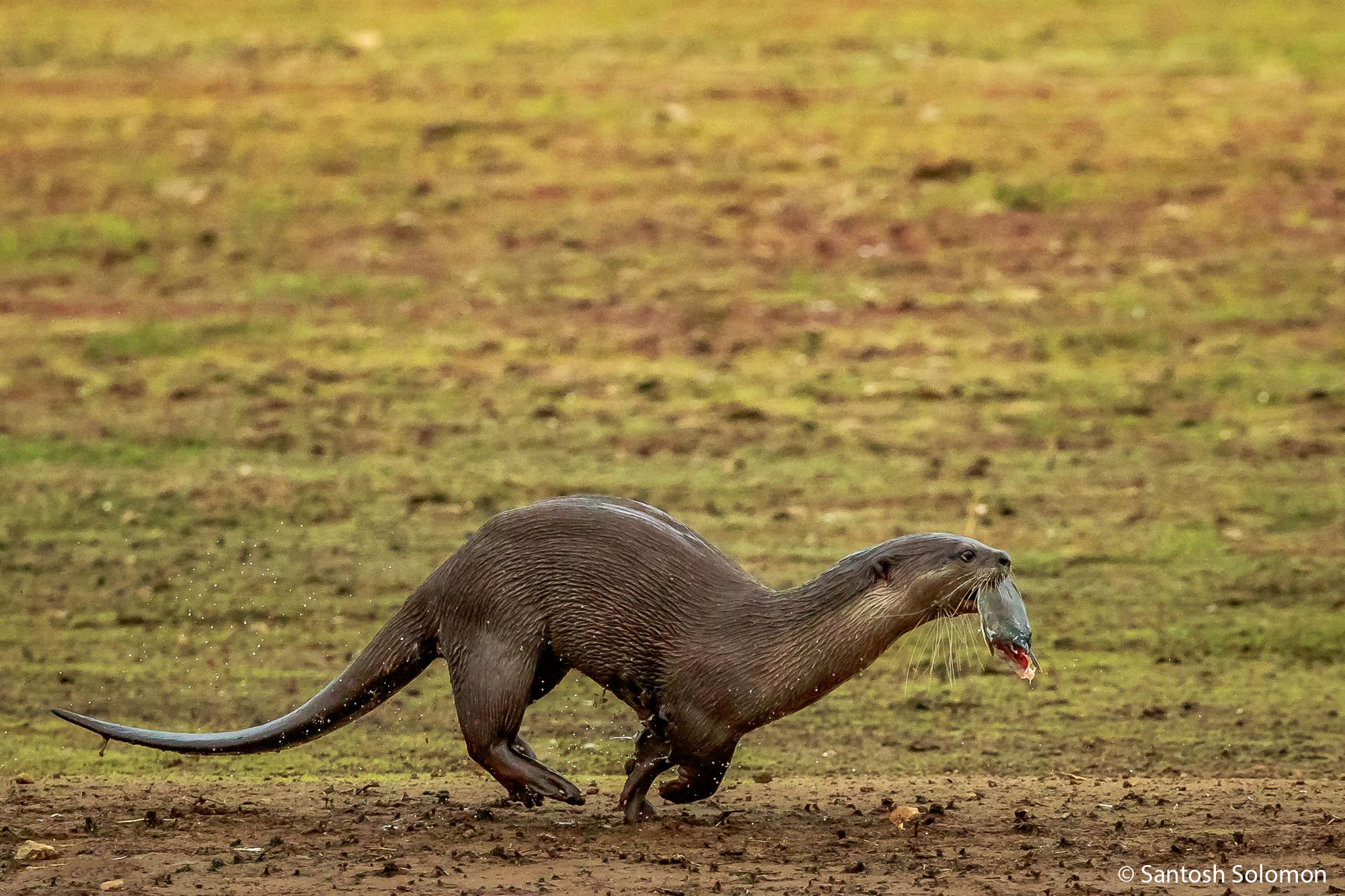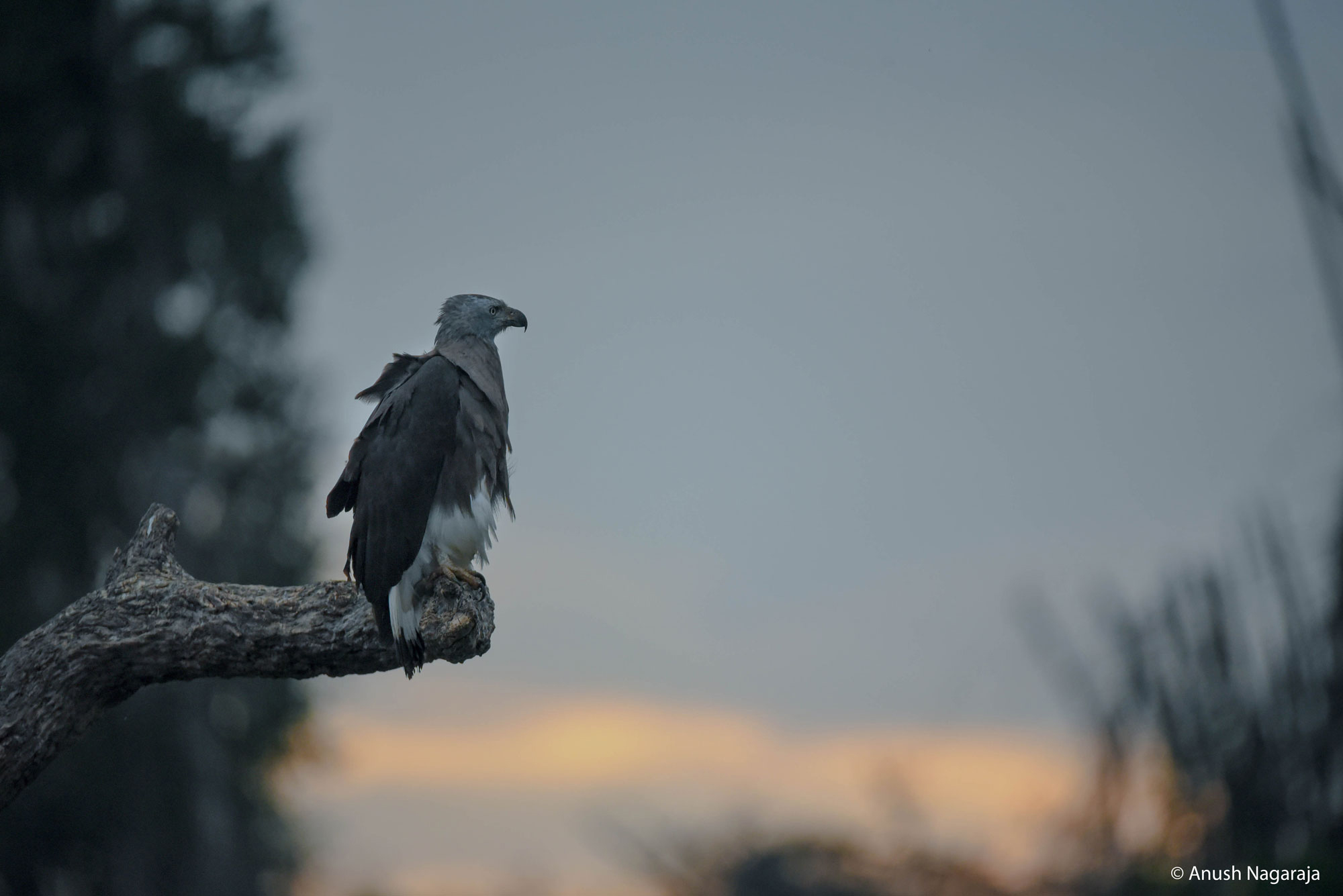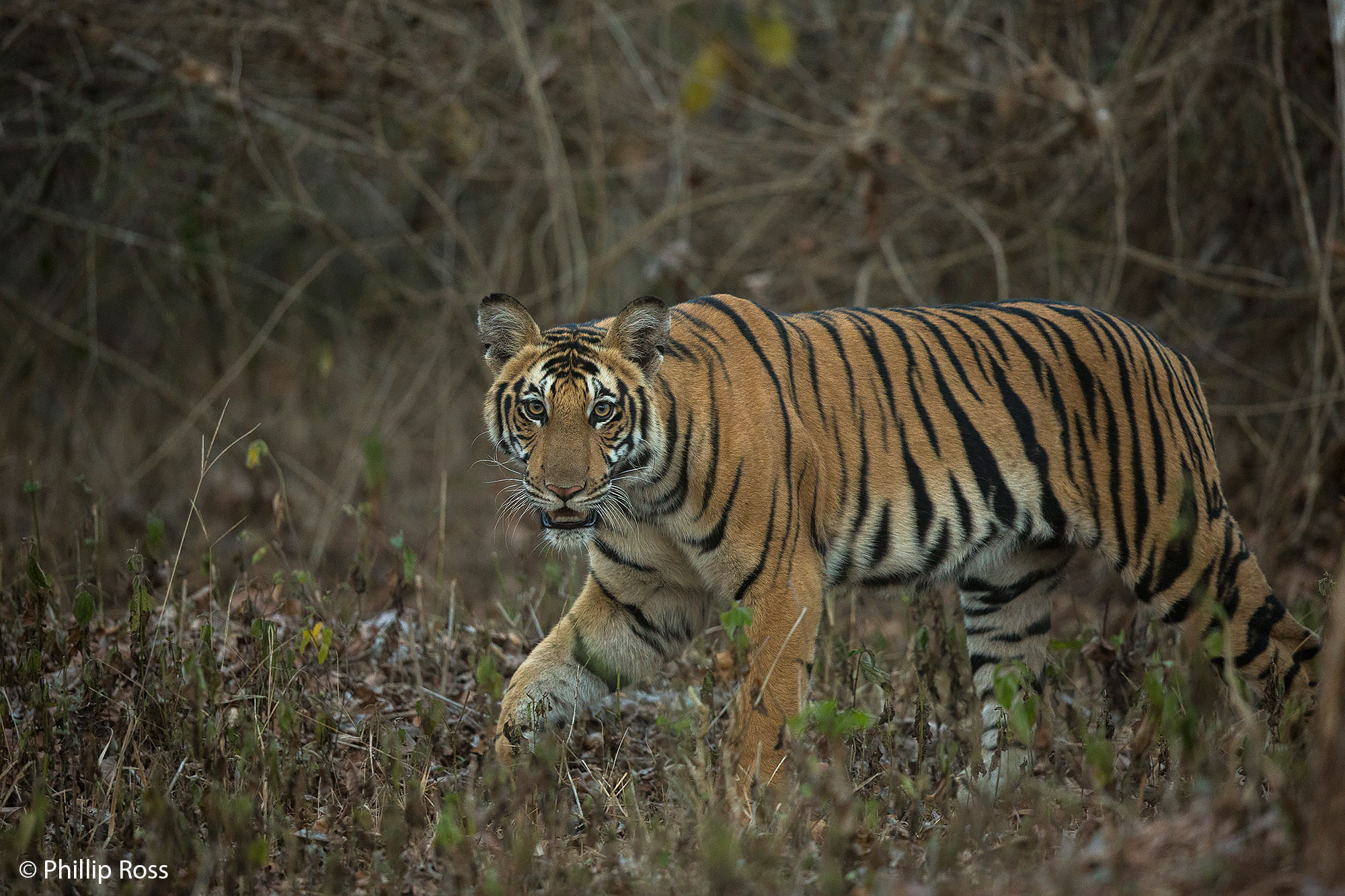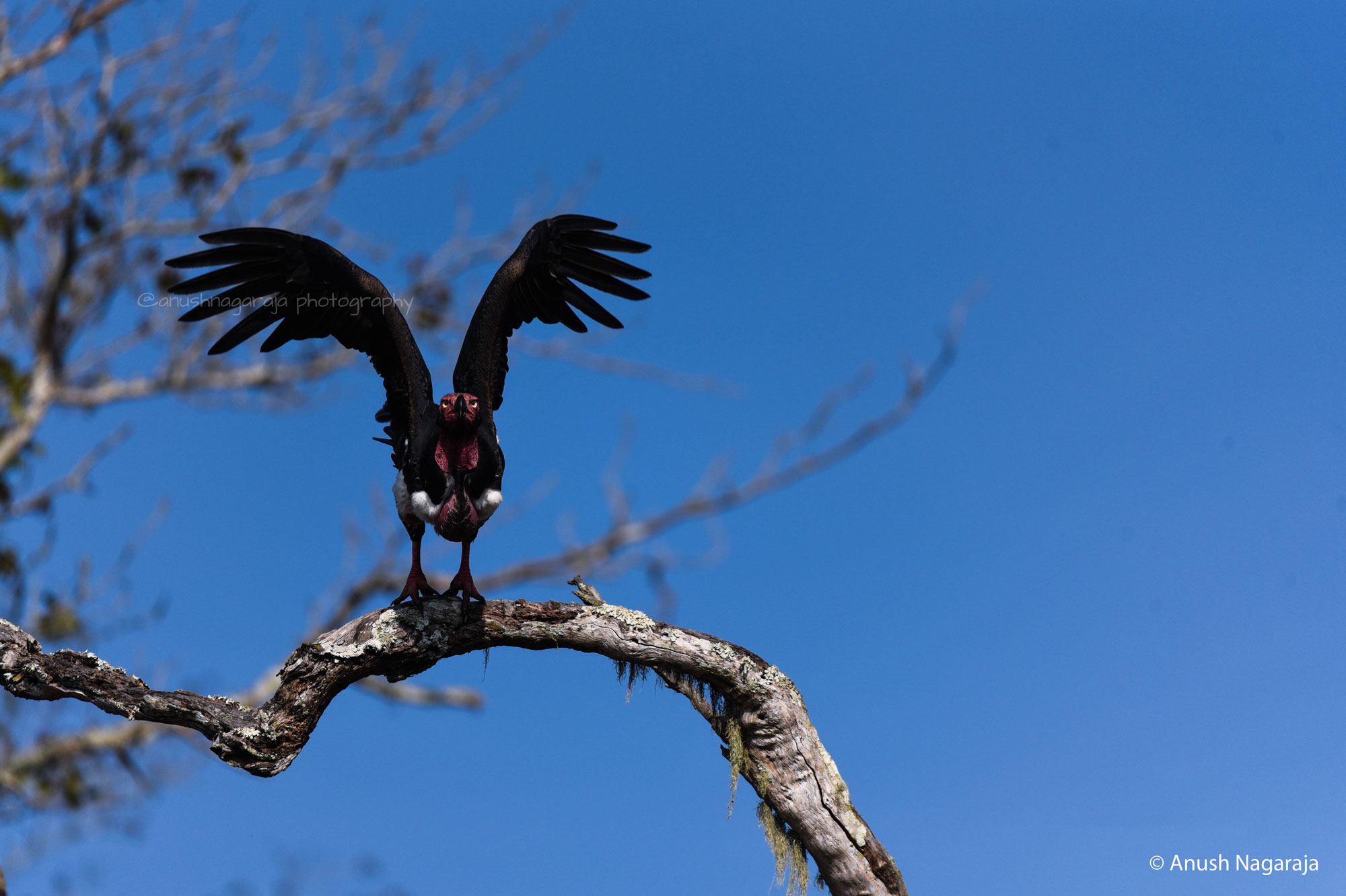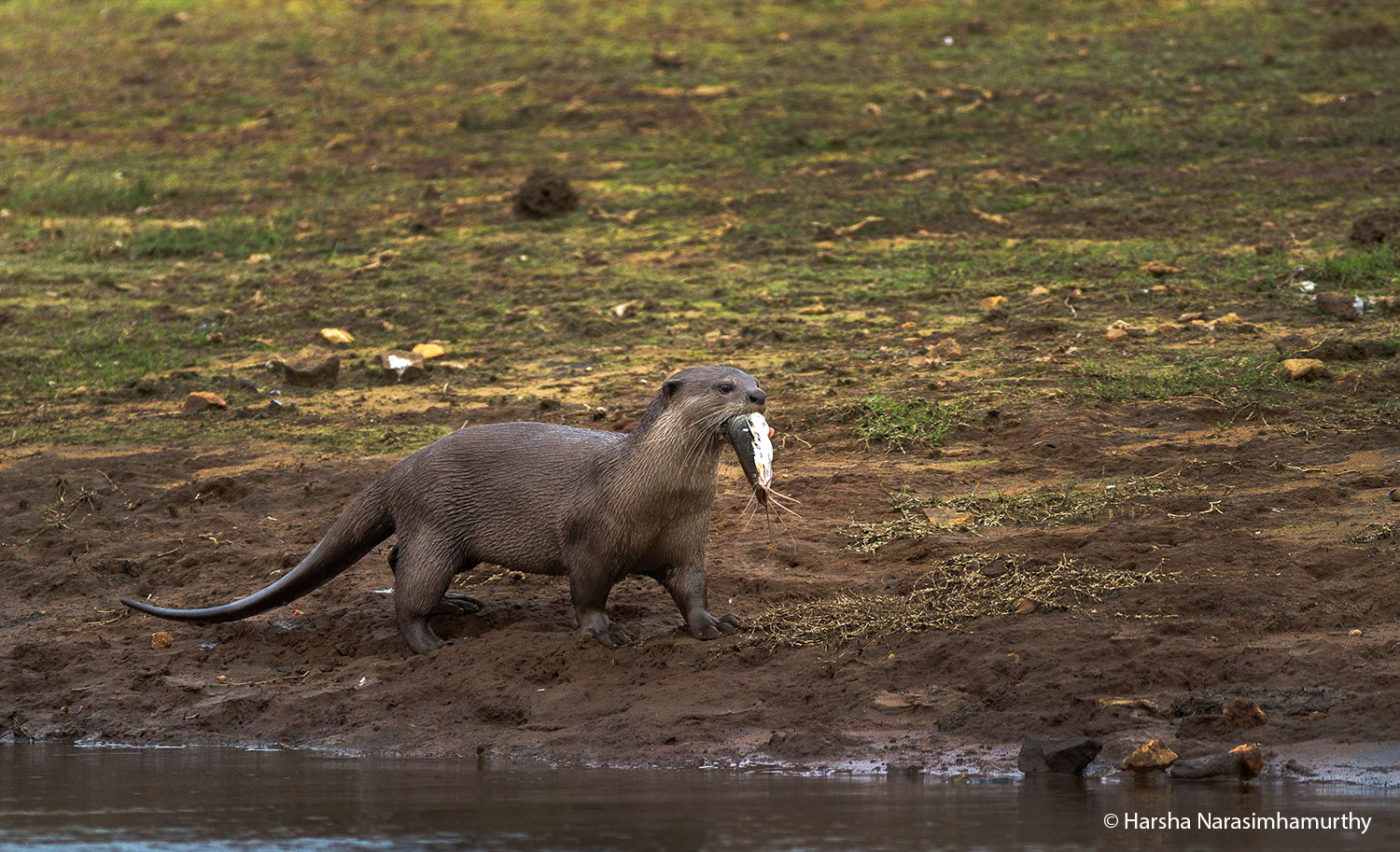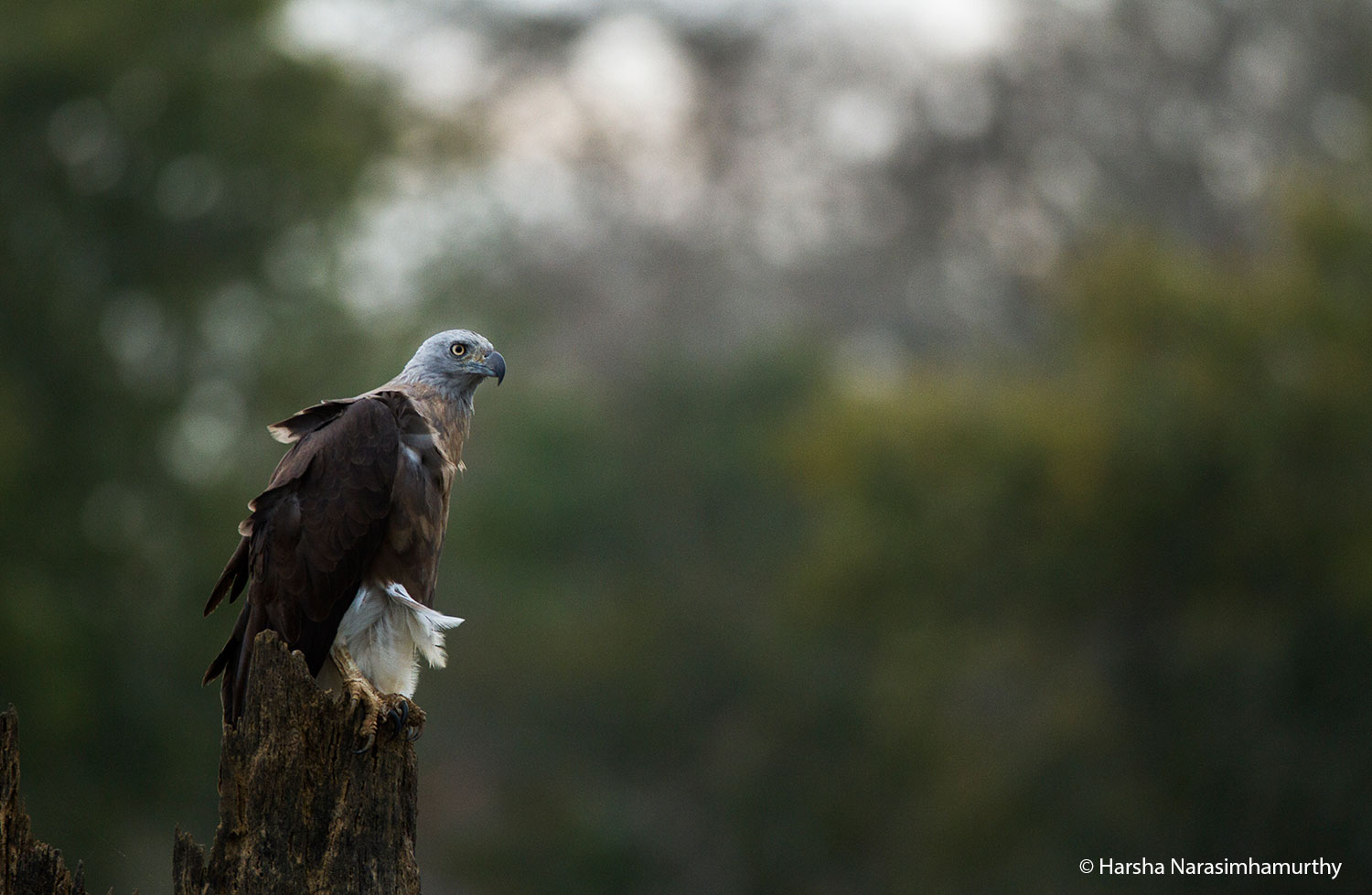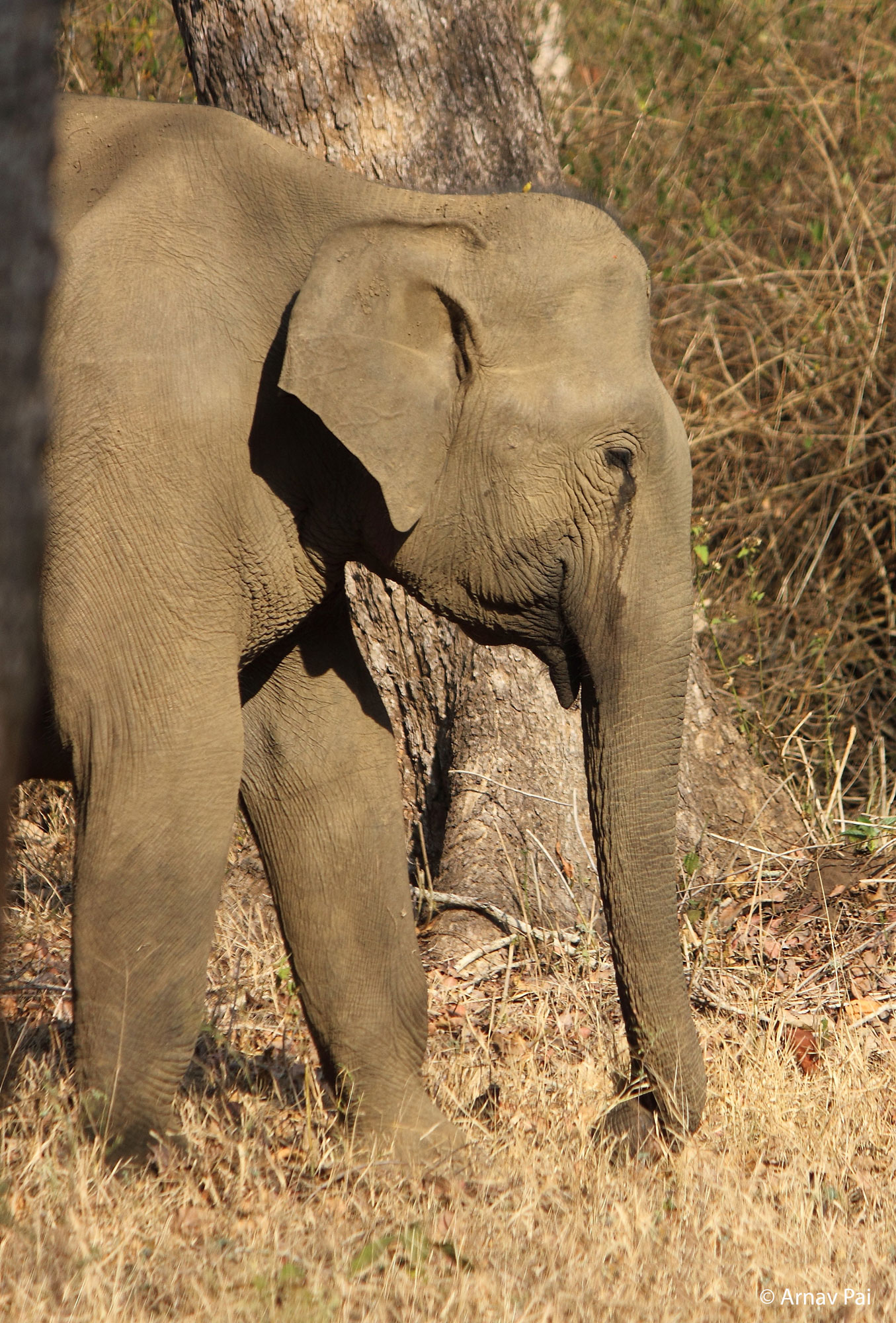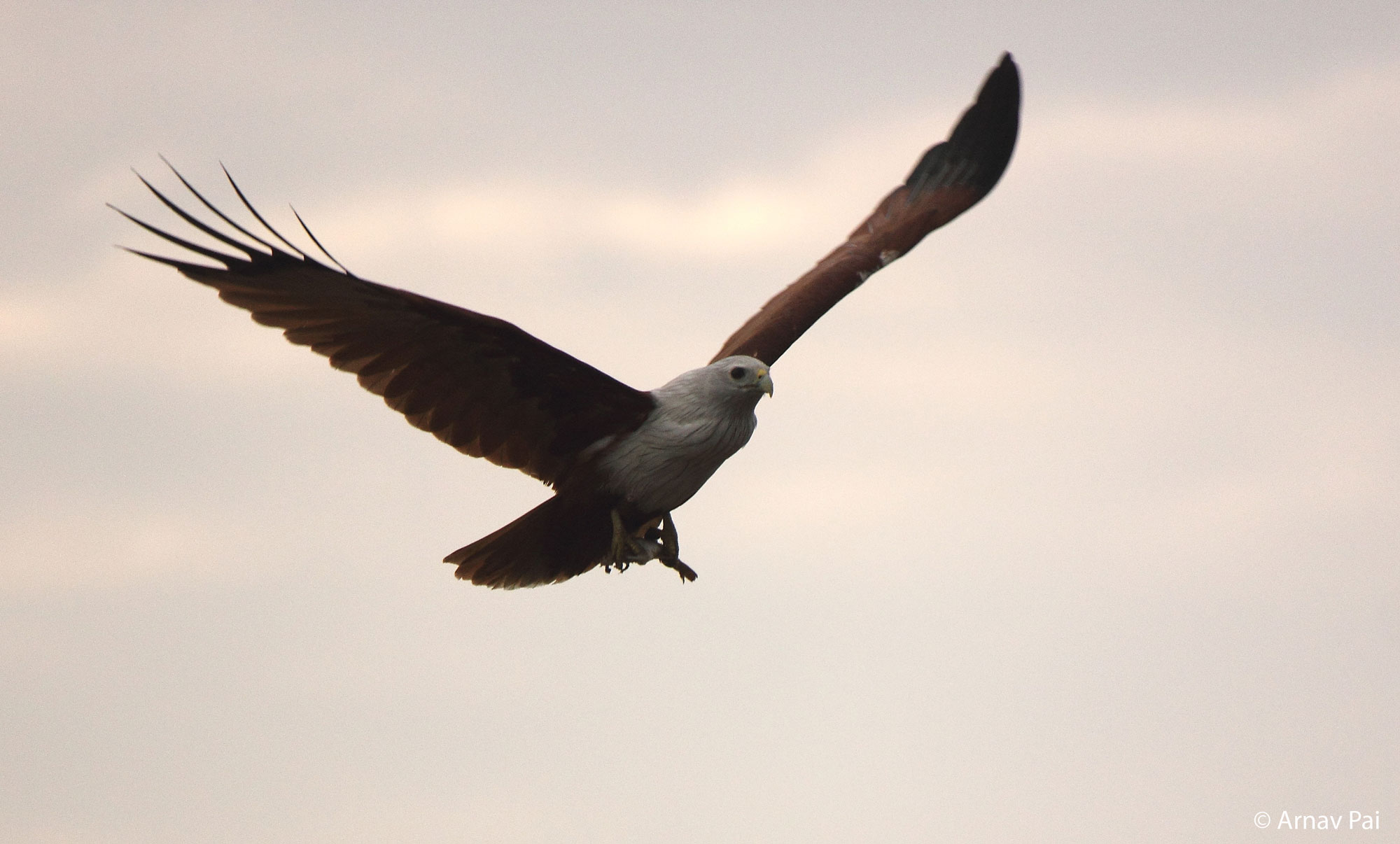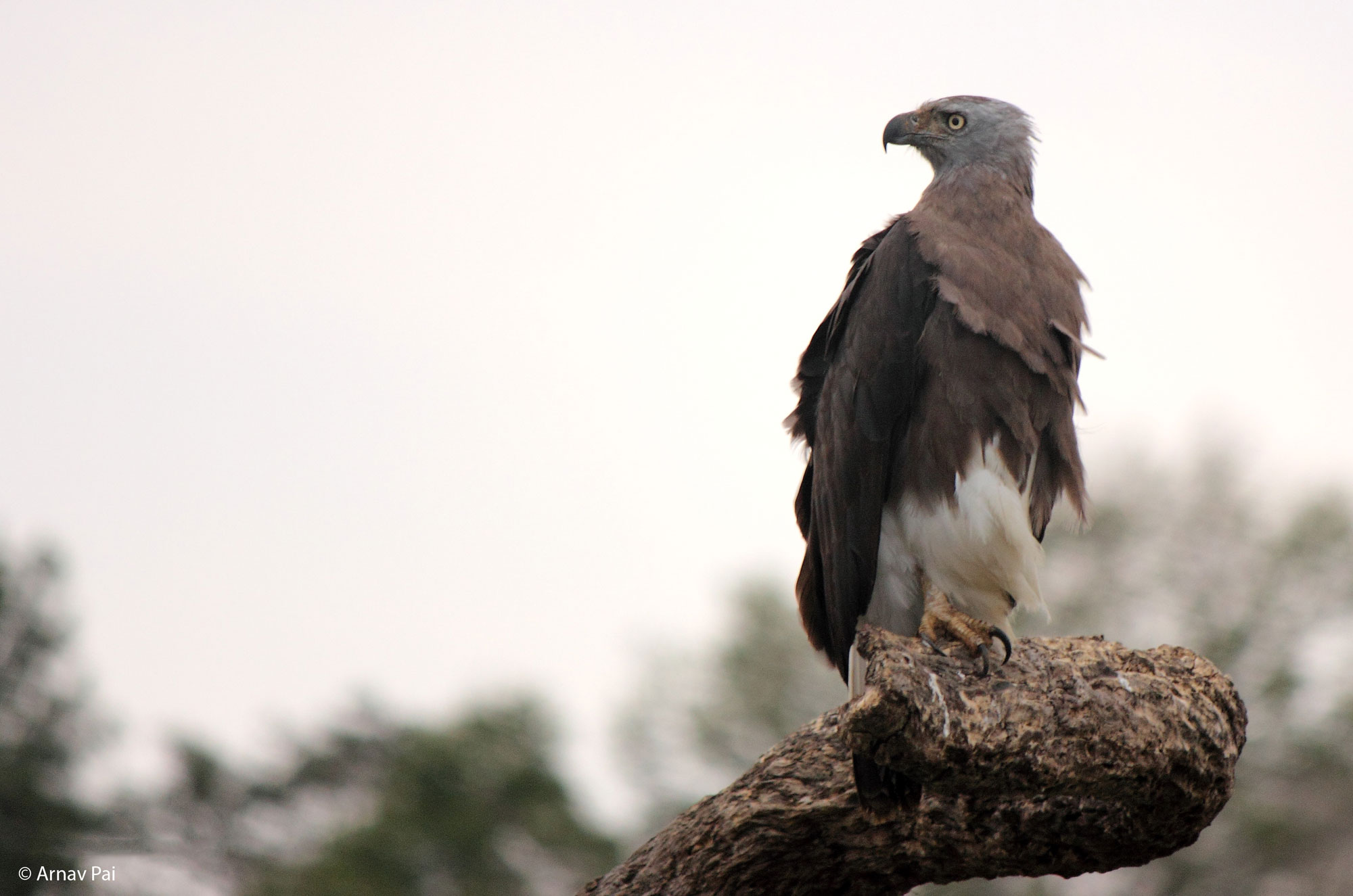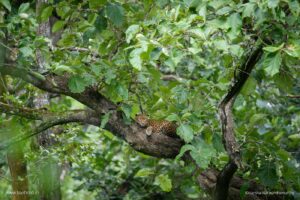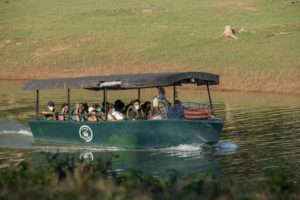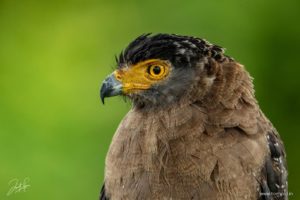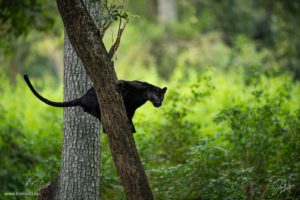When the participants arrived at Kabini River Lodge for the two-night/three-day Wildlife Photography Tour, little did they know just how deeper their connection with the wild would get than they had imagined. And that’s what happened: a rewarding journey into the thick, green forests of Kabini in the wintry days of January.
The first day of the Tour, after lunch, Tour Skippers Phillip Ross and Harsha Narasimhamurthy got the enthusiastic participants acquainted with Kabini and the wild beings to which it’s home. Participants introduced themselves and shared between them some common love – for the wild and for wildlife photography.
On their first evening safari, the participants were divided into two groups to be taken in two different vehicles, each headed by a Toehold Skipper. They went to Zone ‘A’, where herds of spotted deer and sambar readily welcomed them. In view of a lot of cat activity reported a few days prior to the Tour, the group went to Tiger Tank.
When they arrived there, there were already many other vehicles, but after waiting for a while, the other vehicles left, while our group stayed anticipating a sighting. Just as they moved a little further on to the Powerline road, as though it had heard their inner whispery wishes, a tiger cub was seen resting on the road! Skipper Harsha quickly took matters in hand and helped participants with the ideal settings on their cameras so that they could make the best images of the big cat.
As the resting beauty disappeared into the thickets, another arrived, crossed the road and followed the one that had left only a couple of minutes before!
Meanwhile, the participants in the safari vehicle skippered by Phillip had seen a tigress swimming across the Sigur waterhole and eventually disappearing into the forest behind.
After wandering around in the forest for a while, they happened to cross the Hoskere waterhole and to their infinitely generous good fortune, they found the same tigress again, and this time, photographing and watching her in the golden evening light meant to be an ever-lasting memory for the participants.
The other group then got to see a sloth bear near Tiger Tank, and they watched the black, furry thing drinking water, which also proved to be a great wildlife photography opportunity. They also saw many more sambar herds as they were heading back from the forest, the winding ways unspooling from the depths of it.
When they came back to the lodge and were treating themselves to some refreshing beverages, the smiles on their faces were testimonials to how happy they were after the first safari. After a small break, they gathered at the Viceroy Bungalow for a session on photography by 8 pm. After an hour-and-a-half, they were led to some delicious dinner before calling it a night.
The second day of the Tour began with much more excitement than the first as they had tasted the massive joys of being in the wild and watching the beings of the wild in their natural home.
The next morning, they headed for Zone ‘B’ and heard alarm calls. After he learned that a tiger had just been seen at Sigur Junction, Harsha asked the driver to steer their vehicle to the same place. The decision paid off as they heard the tigress calling out and waited for a few minutes until finally she appeared before the vehicle and walked into the jungle.
They also saw a majestic tusker crossing the road in the plantation area. Avian beauties such as rufous treepie, black drongo and plum-headed parakeet were also sighted, along with the sighting of the elusive mammal, the mouse deer.
Meanwhile, Phillip’s vehicle fortuitously encountered a lovely specimen of the critically endangered red-headed vulture, affording rare full-frame portraits.
Another highlight of the morning safari was seeing an Indian pitta that delighted the onlookers with its springy steps for a long time, allowing them to make charming images of it.

They returned to the lodge and had breakfast. After the photography discussion at noon, followed by lunch, they left for a boat safari on the tranquil backwaters of the Kabini in an exclusive boat. A few minutes of sailing brought them to the wonderful sight of a bevy of happy, playful otters on the backwater banks. And as soon as they saw the boat, they mischievously started diving into the water and popping their heads above the surface, appearing and disappearing time and again.
One otter caught an African catfish and the group got to see the kill and more action as the otter dipped the fish every now and then and ate it on the bank. It rested a while on a tree stump in the shallow water and finally finished consuming the fish as all the other otters crossed over to the other bank, joining more otters there.
Further on the sail, the group saw a beautiful osprey. A stunning grey-headed fishing eagle, perched on a tree stump with beautiful green background, gave a great opportunity for photography.
Brahminy kite, pied kingfisher, common kingfisher, white-breasted kingfisher, little cormorant, Eurasian spoonbill, painted stork and black ibis were the other avian wildlife that the participants saw and photographed.
Another tusker walking on the banks of the Kabini River and a big herd of elephants on the other side of the bank were a treat to watch. A huge herd of gaur was also spotted. As the sun started sinking below the horizon slowly, a grey-headed fishing eagle perched against a setting sun gave participants a great opportunity to make images of the bird against a beautiful sky.
The second day of the Tour had delighted the participants and elevated their spirits, and that made the photography session in the evening even more exciting and interactive. Photoshop concepts, processing techniques, and participants’ questions were discussed by the Skippers elaborately.
The next day’s final safari was expected to be a showstopper as the previous two days were highly productive in terms of both wildlife sightings and wildlife photography as the group started towards Tiger Tank again. One safari vehicle next to GK Tank had reported fresh pug marks and droppings of a tiger. They went there and waited for a while hoping for some magic to unfold. And they weren’t disappointed.
Two tigers appeared and even started walking towards their vehicle. One went into the thickets while the other gave ample photo opportunities. The other safari vehicle was near Sunkada Katte Forest Guesthouse where they heard warning calls but no big cat appeared. They moved on to Bisilawadi Tank where they saw a herd of sambhars crossing the road.
A crested serpent eagle perched on a tree branch in the beautiful morning light offered some beautiful photos. A sambhar was seen swimming in the Bisilawadi Tank as rest of the herd was seen on the bank. When the vehicle moved on to KV Road as they were just about to exit, many langurs were found and some wonderful back-lit and rim-light images were made.
As the last test of luck, both safari vehicles went to S-Bend where they heard extremely strong warning calls and saw highly alert spotted deer running around, sensing a predator’s presence strongly in the area. The same happened at the Hosakere Tank but it was time to leave the park even though the spotted deer calls testified to the presence of a predator there.
The group returned to the resort for breakfast which was to be followed by a farewell to the Kabini forest and its wildlife, and to one another.
Perhaps the world is better understood through its natural stories that are continuously narrated by itself, and one only needs to slow down and pay attention. That’s what the participants of the Kabini January 2017 Wildlife Photography Tour did, and they have artfully transformed moments of those stories into images that are capable of conversations.
To join our next Tour, click here.


